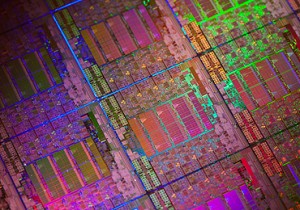 Intel on Tuesday announced the Xeon E5-2600 processors for 2- and 4-socket servers, which is the company’s first major chip upgrade for industry standard x86 servers in close to two years.
Intel on Tuesday announced the Xeon E5-2600 processors for 2- and 4-socket servers, which is the company’s first major chip upgrade for industry standard x86 servers in close to two years.
The processors include up to 8 cores and are up to 80 percent faster than predecessors, said Diane Bryant, vice president and general manager of the Datacenter and Connected Systems Group at a press event in Santa Clara, California, which was webcast. The processors consume half the power of their predecessors, Intel said.
Intel’s last major server upgrade was in March 2010, when the company announced the Xeon 5600 servers. Intel’s current portfolio of server chips includes low-end Xeon E3 chips based on the Sandy Bridge micro-architecture for servers with up to 2 sockets, and Xeon E7 chips for high-end servers, which has up to 10 cores and is based on the older Westmere architecture.
Intel has over 400 server designs with the new chip, Bryant said. IBM, Hewlett-Packard and Dell are among the companies launching new servers. IBM claimed its new two-socket BladeCenter HS23 is 62 percent faster, supports four times more memory and runs 20 percent more virtual machines than its predecessor BladeCenter HS22.
Intel has already supplied E5 chips for a supercomputer called Stampede, which will be fully deployed in 2013 at the Texas Advanced Computing Center at the University of Texas. The supercomputer will deliver peak performance of 10 petaflops (or 10,000 trillion operations per second), with E5 chips handling 20 percent of the processing load, and a specialised Intel coprocessor called Knights Corner handling 80 percent of the load.
Global Internet traffic growth is putting a strain on data centres, and the new processors will help servers respond more quickly to queries, Bryant said.
“We need to think about E5 across the entire data centre,” she said.
The new processors should also help drive up server utilisation through virtualisation, which should also help cut down power and cooling costs, Bryant said.
But it’s not always about performance, so the company is addressing storage, networking, memory and security challenges related to data centres, Bryant said. Intel has built bandwidth improvements inside the chip to cut latency by 30 percent, which could help scale cloud deployments and the deployment of more virtual machines.
The Xeon E5-2600 processors are the first to integrate the PCI-Express 3.0 bus on the processor. The PCI-Express technology is prominently used to transfer data between components inside computers and devices. PCIe 3.0 moves data at 8 gigatransfers per second, which is an improvement over its predecessor PCI-Express 2.0, which has a speed of 5 gigatransfers per second.
The processor is also the first to allow Ethernet controllers and adapters to route I/O traffic directly to processor cache. The technology reduces DRAM refreshes by cutting trips of data to system memory, reducing latency and saving power.
Intel also launched an Ethernet controller that brings 10-gigabit Ethernet closer to motherboard, making it easier for companies to deploy the networking technology in servers. Server makers said that support for 10-Gigabit Ethernet at the motherboard level should shuffle network traffic a lot quicker in data centres.
Intel is initially launching 17 Xeon E5-2600 processors priced from US$198 to $2,050 in quantities of 1,000. The company also launched the Intel Xeon E5-1600 processors for workstations, which are priced between $284 to $1,080.





